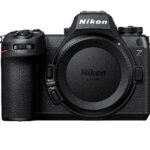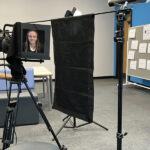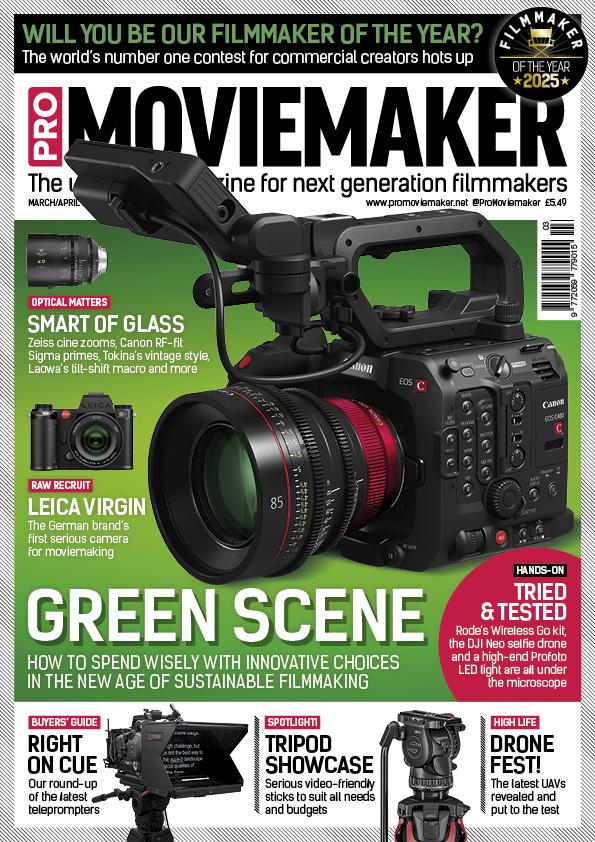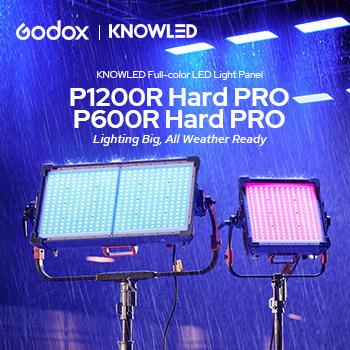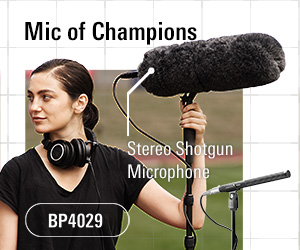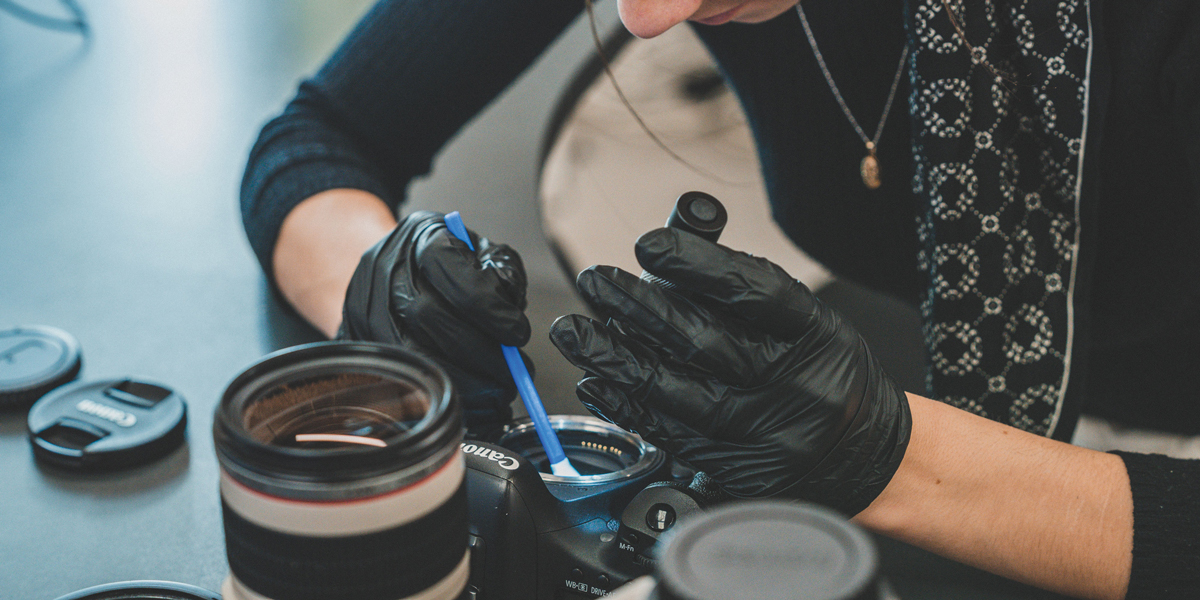
Mirrorless Marvels for Movies
Posted on Jul 3, 2024 by Pro Moviemaker
The best equipment for getting serious about filmmaking is mirrorless, and MPB has you covered with a wide range of options
Advertisement feature
The DSLR may have started the digital filmmaking revolution, but it’s the mirrorless camera which makes more sense for filmmaking, being the best tool by far for moving to motion. That’s not to say you can’t use a video-equipped DSLR, but the advantages of mirrorless cameras – allied to the low price so many are available for used – make so much sense.
That’s especially true if you source your equipment from the massive range available at award-winning used specialist MPB, where all the kit is on offer at a huge saving over new. Unlike the risk of buying equipment from social media groups or auction sites, MPB doesn’t sell broken, stolen or grey import kit. You get more for your money with no risks, allowing you to concentrate on learning vital filmmaking skills rather than whether your equipment will let you down.
Why is the mirrorless so good?
Mirrorless is the best choice to get you going for shooting high-quality films. Camcorders may have better battery life and higher-quality built-in audio, but they are alien to newbies. Plus, their fixed lenses, with slow maximum apertures and old-school contrast-detection AF, can be severely limiting. Allied to their relatively small sensors which aren’t great in low light, they are not the best way on for creating a cinematic-style video.
DSLRs can be great, but they don’t offer full-time live view through the viewfinder as the mirror gets in the way. They also don’t have the vast codec choices or on-sensor phase-detection AF to keep up with the action.
Mirrorless cameras have far more choices of high-quality codecs and bit rates. They’ll have an incredible AF system with AI-based subject recognition and touch-to-focus tech. The screens will tilt, swivel or flip round to help with framing the shot; they’re often smaller and lighter, too. You can also usually output the holy grail of footage, Raw video, to external monitors.
The optical options
Already having several lenses can have a huge impact on which mirrorless system to go with. Stick with a system that can make use of your glass, then add on speciality kit as you grow as a filmmaker.
If you shoot mirrorless with cameras that have a Micro Four Thirds fit, Sony E, Fujifilm X, Nikon Z, Canon RF or Leica L-Mount, it can be a great idea to stick to that brand. Maybe invest in a more video-specific camera model as your ambitions grow, such as a Canon EOS R5 C, Sony A7S III or Panasonic S1H to complement your current set-up. Otherwise, part-exchange your older model at MPB, where it’s safe and easy to upgrade.
If you have DSLR lenses, many can be used on mirrorless cameras via relatively inexpensive adapters. Canon EF mount lenses can be used on RF mounts, often while retaining AF. Similarly, Nikon F to Z, or Sony A to FE.
Many lenses can be adapted to other brands, but this can be at the expense of AF. If you opt for a Sony E-mount mirrorless, you can buy adapters to fit Canon EF, Nikon F, Leica M, Canon FD glass and more. They must be used manually, but for filmmaking, that can be a bonus. MPB has vast stocks of DSLR-fit glass, or you can pick up something exotic like a Canon RF 85mm f/1.2L USM prime for around £1850.
Alternatively, mirrorless cameras are ideal partners for manual-focus cine lenses such as the Samyang cine optics. Take the 35mm T1.3 ED AS VCSC for Sony APS-C sensors, a snip at just £234. T stop lenses bring consistency, as stills-style f/stops are based on a mathematical formula instead of a measure of the actual light transmitted.
For something of higher quality, Sigma’s range of cine zooms and prime lenses are based on the legendary Art range, so check out the incredible Sigma 18-35mm T2 Cine.
If you prefer to use all the latest AF tech on your mirrorless camera, a lens like the Nikon Nikkor Z 50mm f/1.2S is a dream buy and will give that filmic bokeh that’s in such demand. Sony has a range of AF lenses specifically for mirrorless such as the FE PZ 28-135mm f/4 G OSS power zoom at £1569. Or, go fully cinematic with a Sirui 50mm T2.9 1.6x for just £799 to shoot full in Cinemascope widescreen.
Of course, you could choose to chop in all the lenses and cameras you have and make a move to mirrorless-only from any brand. With MPB, it’s easy and affordable.
Time to go full frame?
There are various capable mirrorless cameras without full-frame sensors which are relatively inexpensive and light, as well as taking smaller lenses. But with such bargains at MPB, it might be time to make the leap to full-frame and relish in that wafer-thin depth-of-field and the incredible low-light performance.
MPB stocks the latest models like the Panasonic Lumix S5 II and its big brother, the S5 IIX, which has more moviemaking spec. These are an amazing way into the L-mount system; a body can cost as little as £1189. For a camera now boasting phase detection AF, a huge choice of codecs and bit rates, it’s a great buy. Even the older S1 is a great camera for movies, although the AF isn’t as good. But for £739, it’s a snip.
For Sony shooters, the most popular camera for filmmaking is the A7S III – it’s still very much a current model. At £2619 used, it’s a bargain for the stunning 4K, low-noise images it can shoot. If your budget won’t stretch that far, a used Sony A7 III starts from £834 and is still capable.
Full-frame Canon users could go for an EOS R5 for as little as £2079, or an EOS R7 for less than half of that. Nikon’s Z 9 or Z 8 are also strong picks and current, with decent stocks available at MPB.
If you don’t mind shooting with a camera with a slightly smaller sensor, check out the Fujifilm range – especially the X-H2S, which has a rapid stacked sensor, great AF and lots of detail-rich codecs to select, all for £1799. The X-T4 is a great all-rounder from just £844.
But don’t write off Micro Four Thirds cameras, particularly Panasonic’s range as they are brimming with video-specific features. The GH5 II records in V-Log L, shoots DCI 4K in 10-bit 4:2:0 at up to 60p and you only need £639 to own one.
Why it’s best to buy from MPB
There is a massive stock of DSLR and mirrorless cameras, lenses and accessories at MPB – a retailer that’s rated five stars on Trustpilot with over 300,000 customers. But best of all, MPB takes the worry out of the process, whether you’re buying used kit or selling your unwanted equipment.
MPB’s technical experts test every item to ensure it’s working properly and is listed on the website, graded from ‘like-new’ to ‘well-used’ and individually photographed. Everything you buy comes with a free six-month warranty.
The website also gives you an instant valuation for your old kit, which can be collected for free with no obligation. It’s the modern way to recycle, and means you can be out shooting your masterpiece with new mirrorless kit incredibly quickly!
Vote for us in the Gear of the Year Awards!
The winners of the annual Gear of the Year Awards are chosen by you, the readers, so be sure to cast your vote now via this link!
This feature was first published in the July/August 2024 issue of Pro Moviemaker.

